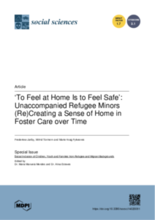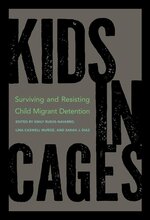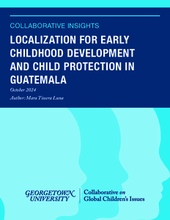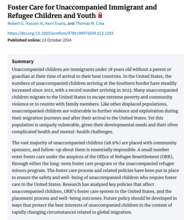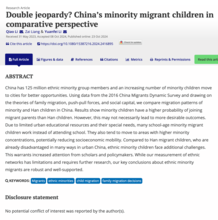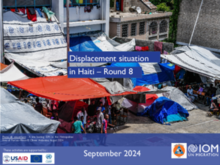Displaying 11 - 20 of 835
This Norwegian study examines how unaccompanied refugee minors in foster care (re)create a sense of home over time, identifying security, familiarity, and autonomy as key intertwined aspects. It underscores the dynamic role of past experiences, present circumstances, and future aspirations, emphasizing the need for foster parents and child welfare workers to support cultural, relational, and personal continuity.
This interdisciplinary work brings together voices from the legal realm, the academic world, and the on-the-ground experiences of activists and practitioners. At the heart of these narratives lies a crucial debate: the tension between harm-reduction strategies and abolition.
This Collaborative Insights report gathers perspectives on strengthening ECD efforts from Guatemalan grassroots practitioners, national social movements, community-based organizations, international non-governmental organizations, donors, and the Guatemalan government.
Global migration is on the rise, and as a result, millions of children are left in their home countries while their parents migrate abroad. Little is known about the mental health of left-behind children (LBC) in Eastern Europe. The study addresses this research gap in Georgia, a leading migrant-sending country in the region.
This article analyzes the experience of unaccompanied young migrants in the protection system of Catalonia (Spain) and their preparation for the transition to independent living. A survey with 90 unaccompanied migrant youths who were about to leave care was conducted.
This research analyzed key policies that affect unaccompanied children, the Office of Refugee Resettlement (ORR)'s foster care system in the United States, and the placement process and well-being outcomes.
Using data from the 2016 China Migrants Dynamic Survey and drawing on the theories of family migration, push-pull forces, and social capital, the authors compare migration patterns of minority and Han children in China. Results show minority children have a higher probability of joining migrant parents than Han children. However, this may not necessarily lead to more desirable outcomes.
This IOM report reveals that there are more than 700,000 people currently displaced within Haiti, 52% of whom are children. Haiti is experiencing an unprecedented crisis that has affected the entire population, including the many orphanages operating there.
This study examined the categories that states use to classify and govern migrants. Unaccompanied minors and adult asylum seekers are treated very differently regarding their asylum cases and residence permits. The study focused on Germany, where the courts and youth welfare offices commission age assessments to decide whether young migrants will be considered minors or adults. These assessments are carried out by forensic medical examiners and social workers, respectively, who work with very different understandings of what constitutes age.
This study explores Ukrainian responses to internally displaced people during the first and second waves of war-induced displacement and internal migration in Ukraine, which took place after the annexation of Crimea in 2014 and after the full-scale invasion of 2022. It also addresses the unique challenges faced by Ukrainian social work professionals in supporting displaced people, service people and their families, disabled veterans, and orphaned children as the war continues and also for resettlement in a post-war context.

